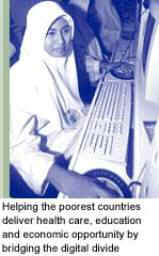Apr 14, 2025
Apr 14, 2025
Roopam has given birth to a premature baby. Both the mother and the baby girl were at a risk, till technology took over. Roopam's husband Kartik is a lineman at the local Gontur railway station and they cannot affort state-of the art health care of the big metros. The local gynecologist told Roopam and Kartik that they need not worry. The baby would be put inside an incubator, where she would be all cosy and warm. For a week, after fighting between life and death, Roopam and Kartik are going back home with their baby, who still now is without a name. In Kartik's family the name of the baby has to be given by the eldest lady of the family, which was her grand mother Phoolmati Devi. She stays in Uttar Kashi, the ancestral home of Kartik.
So before going back home they stop their tonga and stop by a local telephone booth to call up 'dadima'. The issue was a name for the new issue. Dadima suggested that the baby should be named 'Arjun', as he showed his brave-ness from day one of his life.
Today, our life is all about science, but does everything in our life demand technology? Embracing technology has always been a concern for society from time immemorial. 'How much do we allow technology in our life-streams?', has always been a concern for the common man. 'Would technology not risk our jobs and livelihood? Would technology mean our existing skills are all gone, down the drain? Would technology mean we would have to re-train ourselves?'
Here is an interesting study by the Henley Center, an UK forecasting group, who had attempted to analyze human beings' reaction with respect to technology.
|
Characteristics |
Technophiles |
Aspirational Technophiles |
Functionals |
Technophobes |
|
Percent of population |
24% |
22% |
26% |
28% |
|
Enthusiastic about technology |
Very much |
Very much |
Not at all |
Hostile |
|
Excited about application |
Very much |
Not much |
To an extent |
Hostile |
|
Age group |
Under 35 |
NA |
Over 45 |
Over 60 |
|
Gender |
More male |
More male |
More Female |
More male |
Although this data does not suggest the likes and dislikes of the common man, but it definitely throws some light on how we react to science and technology. It would be a gross over simplification to narrate that technology has done nothing for the common man. Now that a common man can make a reasonably priced technological investment; we are not that skeptical in introducing basic devices like the TV, the audio system, the washing machine to our daily lives.
Science and Technology, although it has not reached one and one due to organizational and governmental inconsistencies; science itself has no stones unturned. Medical advancements, media awareness, communication facilities, entertainment, audio-visual education, ease of travel have all resulted from the encroachment of science and technology in our lives.

(Source www.undp.org) |
These days we see cellular phone booths in remote villages. Fisherman in Kerala and Goa already use the gadget to communicate with fisherman in deep sea. Milkmen in Rajasthan share daily inventories with their buyers in cities over the net. Traders of tea often sell prized leaves over the phone to classy buyers exporting to the international market. Information Technology has done wonders to the common man in terms of education, business, governance and communication. The most orthodox of societies today cannot undermine the contribution of science and technology. And with the Internet ignoring geographical boundaries, the world has become a global marketplace. Today India, although a so-called developing country, has excellent technology manpower and serves millions of corporations worldwide. This has all become possible due to technological awareness amongst the masses. |
UNDP and Indian Institute of Science recently implemented at Hosahalli near Bangalore a Bioelectricity plant to help irrigation waters. The innovative experience uses a strategy for improving the quality of life in villages based on local resources such as land and water. Specifically, the project concentrates on technologies that generate bio-mass and convert bio-residues into energy. Management strategies have been developed to use these technologies as part of an economically sustainable package to provide lighting, drinking water and services such as the milling of grains. At the same time, new jobs are created in the agriculture sector as it expands through the assured supply of irrigation water.
With innovative projects such as these going on, we are gradually approaching a phase in which technology would really have a say in common man's lives and gradually shape his future. We have to understand that each technological initiative that occurs on the face of the earth would gradually percolate down to the bottom lines and everybody would stand to gain.
26-Oct-2000
More by : Subrata Mukherjee